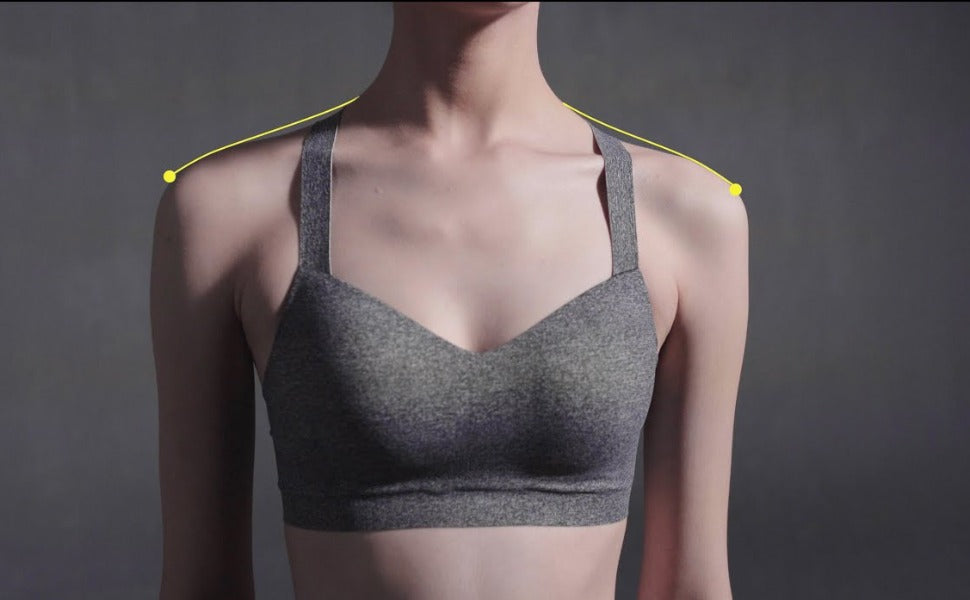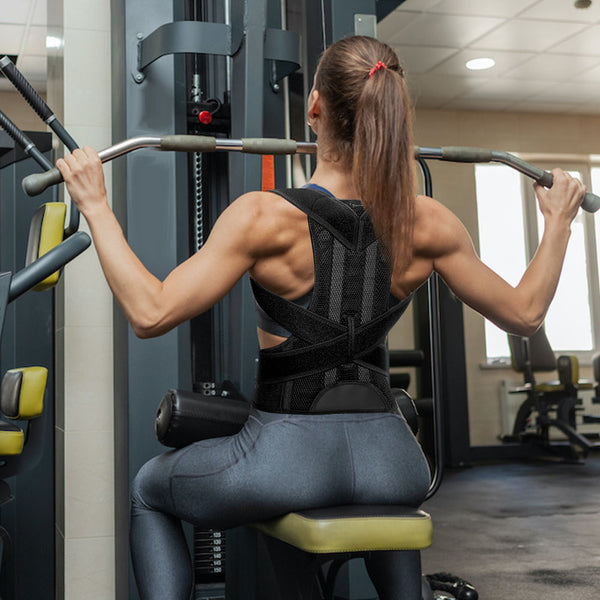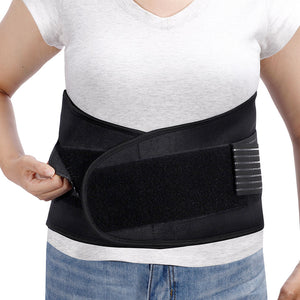How Do You Measure for a Double Shoulder Brace

circumference of your shoulders using a tape measure while your shoulders are relaxed. Next, measure your shoulder width and chest circumference to ensure that the measuring tape fits snugly without being too tight. Using these data, select the appropriate size and refer to the brand's size chart, if possible, to ensure comfort from the brace.
Choosing Your Size
Choosing the for your double shoulder brace is important for a good wearing experience. A well-fitted brace provides the right support to avoid over-movement or poor posture from straining shoulders. The choice of size further influences comfort and freedom of movement. Due to the fact that shoulder structures may vary between subjects, wearing either too tightly or too loosely fitted braces could alter support or even cause discomfort.
Measurements of the shoulder circumference are the first steps in the selection of size. Double shoulder braces are usually issued in size ranging from Small (S) to Extra Large (XL). To determine the correct size, you have to first measure the circumference of your shoulders. They can be measured using a soft measuring tape, ensuring that your shoulders are not tense during measurement.
Standing naturally and relaxed, lay the tape across the top of your shoulder. The tape should touch the front and back of your shoulder, across the widest part of your shoulders and chest. Take the measurement in a full circle to get the circumference of the chest. Common measurement points include the scapula area or just above the shoulder joints. You can refer to the sizing chart provided by the brand based on the results to choose the best-fitting size.
Apart from shoulder circumference, shoulder width, and upper chest measurements also are very important for getting the size. People having wider or thicker shoulders will need to go for a bigger size while smaller people might require a smaller or medium-sized brace. Moreover, flexibility in the shoulder joint itself, development of shoulder muscles, and general health of the shoulder also impacts final size choice. For instance, people with shoulder injuries might feel more comfortable when it is fitted but still rather not too tight for more stable support.
Measuring Shoulders
Measuring the shoulders is not only about estimating the size of the brace, but it also highly affects how effective and comfortable the brace will be. The shoulder is one complex structure composed of bones, muscles, ligaments, and other tissues. For the shoulder brace to fit the shoulder and support it accordingly, accurate measurements will have to be considered.
The shoulder width is usually taken from the highest points of both shoulders. You should take a measurement using the measuring tape across from one outermost edge of your shoulder to the opposite outermost edge, over the neck. It gives an approximation of the length of the shoulder straps and the overall design of the brace so that the straps are not too long or too short and fit the shoulder.
Apart from shoulder width, another very key measurement when choosing a double shoulder brace is chest circumference. The correct chest measurement will ensure a better fitting of the brace, especially for cases where the muscles or fat that surround the shoulder area are more developed. As you take the chest measurement, keep the measuring tape horizontally, fitting snugly across the chest—not too loose or too tight—which may cause inaccuracy.
Other shoulder brace designs may follow the shape of the neck and shoulders. Others may extend to give added support to the neck; therefore, and range of motion also need to be monitored in the measuring process. This is more important when choosing braces which have neck supports or have extra protection around the shoulder and neck area.
Fit Tips
The effectiveness and comfort of a double shoulder brace depend on its overall fit and not its size alone. A well-fitted brace should evenly distribute the pressure on the shoulder in such a way that it may be neither too tight nor too loose for comfort over a long period of use.
Selection of the area of is important. Many of the braces are designed with active zones of back support, with some extra independently adjustable straps that one can utilize for the adjustments of the strength of support. A well-fitted back support area ensures the entire brace stays in place without shifting and supports both the back and shoulders. Poor design or failure of the back support area of the brace to adjust results in the slipping away of it from its effectiveness.
The material used in the brace is directly related to comfort and support. Most double shoulder braces are made of elastic materials such as nylon or neoprene. They are breathable and flexible enough, providing comfort without compromising support. While choosing a brace, there is no scope of compromise on the quality of these materials. Comfort becomes of utmost importance in case of extended wear.
Theoretically, such a brace can avoid causing discomfort due to an excessively tight or loose fit, thanks to its adjustable straps. Although different brace styles may have any number of adjustment straps, some designs boast dual-adjustable shoulder and chest straps that allow multi-dimensional adjustments. Therefore, a wearer should feel and adjust for his comfort of the shoulder structure.

Adjusting Straps
Some of the most important parts of a double shoulder brace are the , which hold the contraption steady and workable. Improper adjustment of the straps usually results in the sliding of the brace during movement or pressure in undesirable areas, hence affecting comfort and support negatively.
The shoulder strap mainly consists of the double shoulder brace, as the comfort and supporting force toward the shoulder largely depend on it. In the process of wearing, it should be paid great attention to whether the shoulder strap is too tight. If it's too tight, it may cause discomfort and affect blood circulation; if it's too loose, it will not provide sufficient support.
In adjusting the shoulder straps, the individual should always allow the shoulders to be relaxed to provide room for the straps to fit without pulling on the shoulders excessively. When such straps happen to be very long, one can shorten them by adjusting the buckles across the strap until a comfortable fit of the strap is attained.
The chest straps provide extra security at the bottom of the brace to prevent it from sliding down any further. While adjusting the chest strap, comfort needs to be considered around the circle of the chest without limiting movements or breathing of the chest. Too tight chest straps may cause pain and lead to breathing troubles, while loose straps will not provide the required support and stability.
When adjusting the chest strap, take into consideration both chest circumference and personal preference. The chest strap should be kept tight to hold the brace in proper position but not to restrict the normal breathing process or the natural movement.
Comfort Check
Comfort will relate to the subjective experience of the user in relation to his feelings towards the brace. An uncomfortable brace may lead to a tiredness of shoulder muscles, a poor blood circulation, or even skin irritation. Hence, it is very important to perform a both before and after wearing the brace.
When first wearing the double shoulder brace, wear it for a short while and make sure that there is no irritation to both shoulder and chest areas. See whether or not the shoulder straps and chest straps fit without being too tight and whether or not the brace remains on securely yet comfortably.
Once you have put the brace on, do some simple movements like raising your arms or rotating your shoulder to see if the brace restricts shoulder movement. The brace most likely fits well if it does not hinder your range of motion and feels comfortable.
Long-term wear may compromise comfort, so comfort levels should be checked periodically to take breaks where needed. Any shoulder fatigue or pressure points you develop may require you to readjust the brace or to rest to alleviate discomfort.

Avoid Over-Tightening
Although the double shoulder brace is meant for support, the constrictive strap may be too tight to result in discomfort and other side effects. The tightness of shoulder straps or chest straps obstructs blood circulation; putting these on for quite a while would result in the compression of shoulder muscles or even injury.
The correct tightness of the brace should be such as to provide , and yet not restrict free movement of the shoulders. You should feel, when wearing the brace, that it well supports the shoulders without any feeling of pressure.
If it seems to be fitting too tightly, that could be a sign of the wrong size being worn. Remeasuring over the shoulder and chest area will give you an appropriate size without unnecessary tension and discomfort.
Common Mistakes
There are common mistakes that people often make when using a , and these errors will definitely be influencing the brace in its performance and comfort or even leading to unnecessary issues at the shoulders.
Many people wear the wrong size, simply because they do not know their shoulder measurements. A size that is too snug can create too much tension in the shoulders, while one that is too loose will never hold up properly. Thus, your size must be picked carefully with your actual shoulder measurements in mind.
The straps of the brace have to be adjusted according to the shape of his shoulders. Many people don't pay enough attention to adjustment while putting on braces, either on shoulder straps or chest straps. This results in not very good support provided by the brace to the individual. Proper adjustments not only improve comfort but also enhance therapeutic and preventive effects of the brace.
Many people, while wearing a double shoulder brace, do not properly manage their wear-time. Prolonged wear of the brace might easily affect the shoulders to have muscle fatigue or even stiffness in their joints. One should take regular breaks
-
Posted in
Brace, Pain, Shoulder pain














